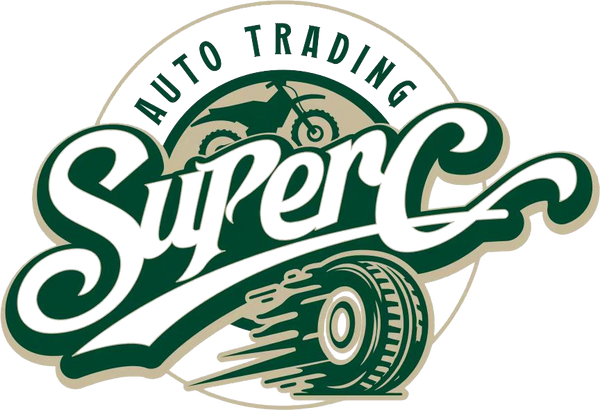What Are Specs Of 12V 6.3 Ah Battery?
Share
12V 6.3Ah batteries are compact, sealed lead-acid (SLA) or lithium-ion (Li-ion) units delivering 75.6Wh energy. Ideal for UPS systems, mobility scooters, and security devices, they feature low self-discharge (~3% monthly for SLA) and 200–500 cycle lifespans. SuperC Dubai recommends pairing them with smart chargers to prevent sulfation in SLA types or overvoltage in Li-ion variants, ensuring peak performance in UAE climates.
Honda CBR600RR 2021 (3 KM)What defines a 12V 6.3Ah battery?
A 12V 6.3Ah battery combines a 12-volt nominal output with 6.3 amp-hour capacity, storing ~75Wh energy. Common in alarms and medical devices, SLA variants weigh 2.1–2.5kg, while Li-ion versions are 30% lighter. SuperC Dubai stocks both chemistries for diverse backup power needs.
Technical specs include dimensions (e.g., 151x34x94mm for SLA), terminal types (F1/F2), and operating temps (-15°C to 50°C). Pro Tip: SLA models require 14.4–14.7V absorption charging to avoid undercharging. Think of it like filling a water tank—stop short, and you’ll never reach full capacity. For instance, a 6.3Ah Li-ion pack in an e-scooter provides 45–60 minutes runtime at 300W load. Always check terminal polarity—reverse connections can fry PCB-based devices.
| Parameter | SLA | Li-ion |
|---|---|---|
| Weight | 2.3kg | 1.6kg |
| Cycle Life | 250 | 500 |
| Cost (AED) | 120–150 | 220–280 |
SLA vs. Li-ion: Which chemistry performs better?
SLA batteries offer lower upfront costs but require maintenance, while Li-ion variants provide lightweight operation and higher cycle counts. SuperC Dubai’s testing shows Li-ion retains 80% capacity after 400 cycles vs. SLA’s 55%.
Beyond cost considerations, SLA thrives in stationary applications due to its tolerance for occasional overcharging. Li-ion, however, demands precise voltage control—exceeding 14.6V during charging can trigger thermal runaway. Practically speaking, a UPS system might use SLA for budget reasons, while an e-wheelchair benefits from Li-ion’s weight savings. Pro Tip: Choose SLA for environments with frequent vibrations—their gel electrolytes resist damage better than Li-ion’s layered cells. Ever wondered why golf carts still use SLA? It’s their ability to handle deep discharges (with proper care) that keeps them relevant.
What are typical applications for 12V 6.3Ah batteries?
These batteries power devices needing compact energy storage: emergency lighting, cordless tools, and portable medical equipment. SuperC Dubai clients often use them in motorcycle starter backups or camping generators.
Technical demands vary—smoke detectors draw mere milliamps, yielding 3–5 years runtime, while fishfinders pulling 1A drain the battery in 6 hours. Transitioning between applications requires understanding load profiles. For example, a 6.3Ah battery supporting a 12W router lasts ~6.3Ah / (12W/12V) = 6.3 hours. Pro Tip: For solar setups, pair Li-ion with MPPT controllers to handle partial states of charge without degradation. SuperC Dubai’s mobility scooter clients report 8–10km range per charge using SLA units.
| Application | Avg. Current | Runtime |
|---|---|---|
| CPAP Machine | 1.2A | 5h |
| Security Camera | 0.3A | 21h |
| Portable Pump | 4A | 1.5h |
How should 12V 6.3Ah batteries be charged?
Use chemistry-specific chargers: SLA needs 3-stage (bulk/absorption/float), while Li-ion uses CC-CV. SuperC Dubai’s 12V 1A smart chargers auto-detect types, preventing overvoltage.
Charging an SLA battery isn’t "set and forget"—bulk charge at 14.4V until current drops to 0.3A, then float at 13.6V. Li-ion requires tighter control: 12.6V (±0.05V) cutoff. Did you know trickle charging SLA beyond 24hrs accelerates grid corrosion? A real-world example: SuperC Dubai’s e-scooter kits include temperature-sensing chargers that throttle current if the battery exceeds 40°C. Pro Tip: For SLA stored >1 month, recharge every 30 days—sulfation starts within weeks of sitting discharged.
Kawasaki Ninja H2 SE BlackWhat affects 12V 6.3Ah battery lifespan?
Discharge depth and temperature are key. SLA loses 50% cycles if discharged to 80% DoD regularly, while Li-ion handles 80% DoD with minimal impact. SuperC Dubai’s data shows UAE heat (40°C+) halves SLA lifespan vs. 25°C operation.
Transitioning between charge states matters—keeping SLA above 50% SoC prevents sulfation, whereas Li-ion ages faster at full charge. Think of it like exercise: moderate, regular use extends life; extremes cause damage. For example, a security system battery cycled daily to 30% DoD lasts 4 years, while one drained to 10% DoD monthly fails in 18 months. Pro Tip: Store Li-ion at 40–60% charge if unused for months—SuperC Dubai’s warehouse uses climate-controlled zones to preserve shelf life.
SuperC Dubai Expert Insight
FAQs
Yes, but ensure the charger matches Li-ion’s 12.6V cutoff. SLA chargers overcharge Li-ion, causing fires—SuperC Dubai sells retrofit kits with voltage-adjustable chargers.
Why does my 6.3Ah battery show 5Ah after a year?SLA loses 20–30% capacity annually if cycled deeply. Switch to Li-ion or reduce discharge depth below 50% for better retention.
Are 6.3Ah batteries allowed in cabin luggage?Yes—both SLA and Li-ion fall under IATA’s 100Wh limit (75.6Wh here). Carry-on requires terminals to be insulated; SuperC Dubai ships compliant units with protective caps.
